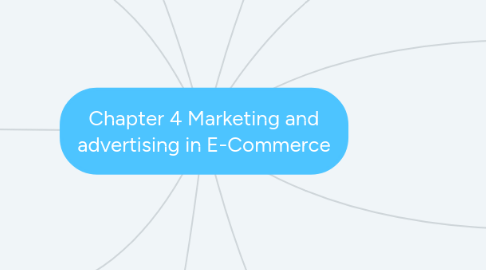Chapter 4 Marketing and advertising in E-Commerce
por sem mun jian


1. Factors influencing online consumer behavior
1.1. Personal Characteristics
1.2. Product/Service Factors
1.3. Merchant and Intermediary Factors
1.4. EC Systems
1.5. Environmental Factors
2. Various advertising strategies and types of promosions
2.1. Search advertising
2.2. Keyword advertising
2.3. Viral marketing(Viral advertising)
2.4. Google : The online advertising king
3. The Online consumer decision-marketing process
3.1. Need identification
3.2. Information search
3.3. Evaluation of alternatives
3.4. Purchase and delivery
3.5. Post purchase activities
4. EC consumer market research
4.1. Market Segmentation Research
4.2. Data collection and analysis
4.3. Online Surveys
4.4. Hearing Directly from customers
5. Objectives and characteristics of Web advertising
5.1. AD views
5.2. Button
5.3. Page
5.4. Click(Ad click)
5.5. CPM (cost per mille, i.e., thousand impressions)
5.6. Conversion rate
5.7. Click-through rate/ratio (CTR)
5.8. Hit
6. Increasing Loyalty And Trust
6.1. Trust in EC
6.1.1. The psychological status of willingness to depend on another person or organization
6.2. EC Trust Models
6.2.1. Online Trust : The belief that an online website or other digital entities can deliver what they promise so that the recipient trust them
6.3. Customer Loyalty : A deep commitment to repurchase or repatronize a preferred product/service continually in the future thereby causing repetitive same-brand or same brand-set purchasing, despite situational influences and marketing efforts that have the potential to cause switching behavior
6.3.1. E-Loyalty : Customer loyalty to an e-tailer or loyalty programs delivered online or supported electronically

